| Reviews & Columns |
|
Reviews DVD TV on DVD Blu-ray 4K UHD International DVDs In Theaters Reviews by Studio Video Games Features Collector Series DVDs Easter Egg Database Interviews DVD Talk Radio Feature Articles Columns Anime Talk DVD Savant Horror DVDs The M.O.D. Squad Art House HD Talk Silent DVD
|
DVD Talk Forum |
|
|
| Resources |
|
DVD Price Search Customer Service #'s RCE Info Links |
|
Columns
|
|
|
Moguls & Movie Stars: A History of Hollywood

Moguls and Movie Stars: A History of Hollywood is a seven part documentary television series created for Turner Classic Movies. This entertaining and informative series was produced and written by Jon Wilkman and narrated by the Academy Award nominated Christopher Plummer. The goal of the series was an ambitious one: to tell the story of how Hollywood began with its earliest founders developing and transforming Hollywood. This is a story of early leaders and iconic stars. This is the story of how Hollywood changed culture and transformed lives.

The foundation of filmmaking was one that would strangely combine art and commerce into one uniquely blended entertainment medium that truly found a way to transform the lives of those connected to it – from the studio moguls who built up empires, to the actors who would display star power, and the ordinary men and women who visited cinemas to find a new form of merry entertainment (which was unlike anything ever seen before as film was only beginning to make an impactful mark on culture).


The entire documentary series is spread across seven episodes which are carefully broken down to focus on specific time period’s and changes to the industry. Episode 1 is Peepshow Pioneers (1889-1907) and focuses entirely on the beginning stages of what would eventually become the motion picture industry. It was a time of innovators such as Thomas Edison, Auguste and Louis Lumière bringing in new machines and technologies that would help suggest the shape of things to come for future moviegoers and filmmakers. It was the very start of what would eventually become the motion picture industry. Nickelodeons, the earliest theaters ever created to feature theatrical presentations, were starting to have a dramatic impact on the possibilities of cinema. Immigrants began to arrive in America and many of these individuals would become important leaders who helped to build the studio systems. Episode 2 is The Birth of Hollywood (1907-1920), and it focuses on the earliest efforts made towards shaping Hollywood as the primary center-point for making motion-pictures. The rise of many early stars such as Charlie Chaplin, Mary Pickford, William S. Hart, and Lillian Gish also began. Women helped to shape an early Hollywood with strong behind-the-scenes roles. Emerging filmmakers such as D.W. Griffith helped change the possibilities for cinematic works. Episode 3, The Dream Merchants (1920-1928), has a strong focus on the formation of the studio systems and the moguls who made them into powerhouses of theatrical entertainment. Studios such as MGM, Warner Bros., Universal, and Paramount are focused on as they started to produce films that would help the industry to change and develop into a more successful, business-oriented field. Theaters opened that made going to the movies more akin to an experience worthy of royalty. Expectations for films were beginning to drastically change. Episode 4, Brother Can You Spare a Dream (1929-1941) the introduction of sound changed the future of film-making and the studio game. The depression of the economy led to new challenges in drawing out audiences, but audiences responded favorably towards such stars as James Cagney, Katharine Hepburn, Shirley Temple, Mae West, and the Marx Brothers. Audiences went to the movies to escape from the dim and disturbing realities faced on a daily basis. Walt Disney arrived as one of the most promising new Hollywood moguls to ever enter the business of filmmaking. Episode 5, Warriors and Peacemakers (1941-1950) brings a strong focus to how American filmmaking was affected by World War II. The films made during this period reflected changes in the times as emotions were stirred by war. Business was also changing for the studios when it was determined that the studios couldn’t control both production and the theaters used to help distribute them. Episode 6, The Attack of the Small Screen (1950-1960) covers the growing rise of popularity with televisions and the impact that was felt by the film industry. New competition led to new audience demands in theatrical films. The sexual revolution was also changing the times. Stars such as James Dean, Marlon Brando, and Marilyn Monroe were introduced. The blacklist helped destroy Hollywood careers through the force found in communist fears. In the seventh and final episode, Fade Out, Fade In (1960-1969) the series concludes by focusing on a new Hollywood system taking over as the original system (established by the founding moguls) had disappeared or was disappearing as honchos died or were removed from the studios they had helped to create. Foreign films and filmmakers changed the way many audiences viewed cinema and a new generation of inspired artists helped lead Hollywood in another new and exciting direction.
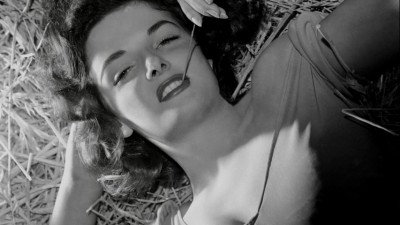
Moguls and Movie Stars: A History of Hollywood is one of the best produced documentaries to cover the history behind early filmmaking and the formation of one of the most influential and important industries in the world. The documentary was clearly well researched before being written and compiled and the high quality of each episode is indicative of that excellence in documentary craftsmanship (which is also an important form of filmmaking). Jon Wilkman deserves huge accolades for crafting such a compelling series as the writer and producer. Wilkman is clearly an expert in Hollywood history and also has a remarkable sense of prose.
An element that helps to cement the series as so well crafted is the high quantity of memorable clips and pictures used throughout the documentary. This is a series filled to the brim with important visuals that are more than complimentary, but rather expertly combined with the narration to help make the information easier to digest and comprehend for a wide viewership. Film clips are frequently used to help place proper emphasis on the most important cinematic creations of each time period that is covered during the series. Interviews are also frequently used and these moments help to make the show more fascinating and downright entertaining.
This seven episode series ultimately manages to cover a huge amount of ground in a short amount of time. Dedicated historians and history buffs who already known plenty about the history of Hollywood aren’t likely to find an abundance of new information here, but those individuals who cannot proclaim themselves as experts (but enjoy history) will find this to be perhaps the most entertaining and comprehensive breakdown on Hollywood history possible. This series would make an excellent crash-course for anyone who wants to learn more about filmmaking in its earliest stages to the huge powerhouse of entertainment and culture it is today. There might be one complaint worth mentioning, and that is the series ability to leave viewers wanting even more. The writing and narration are so enjoyable that audiences will be captivated. There is so much worth appreciating with the Turner Classic Movies presentation of Moguls and Movie Stars: A History of Hollywood.
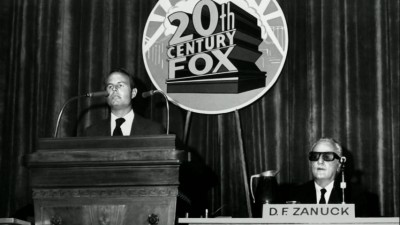

The DVD:
Video:
Moguls and Movie Stars: A History of Hollywood is presented with anamorphic widescreen 16:9 enhancement that properly captures the aspect ratio of the original television broadcasts. Keep in mind, however, that the series contains countless clips of 1.33.1 sources. The video transfer isn’t easy to calculate in comparison to most releases. The video clips are occasionally in poor shape, with print damage and distracting grain levels causing a less pleasing image quality. Images are also frequently used and vary in quality. The overall quality was a bit scattershot as a whole, but not that disappointing ultimately. Interviews are well presented with a pleasing image that looks impressive and modern. Certain clips are clearly restored and well preserved, and yet there isn’t a perfect line of consistency with the clips. This shouldn’t reflect poorly on the documentary or the hard work invested in crafting this production. There is little doubt that a great deal of time and energy was invested in finding suitable clips to use for this series.
Audio:
Audio for Moguls and Movie Stars: A History of Hollywood is fairly standard but altogether appropriate for this kind of television documentary release. The audio presentation is only in English Dolby Digital Stereo. The audio track does an excellent job of emphasizing both the narration and interviews. Dialogue comes through clean and clear on each of the episodes.
Extras:
The only video extras included on this release are a series of discussions with Jon Wilkman, Robert Osborne (Host of Turner Classic Movies), and additional film historians who were involved in helping to create these episodes. Each episode features one of these discussion segments, which run around 10 minutes in length a piece. This totals to a little over an hour of added insight into the crafting of the series and the thought process behind the overall production. These are interesting additional features that add to the experience of viewing each segment and are strongly suggested as required viewing along with each episode of the series. Please note that these additional segments are only provided in non-anamorphic widescreen.
Warner Bros. has presented Moguls and Movie Stars: A History of Hollywood in a sturdy, rather beautiful looking DigiBook which houses the three discs and the forty page book with essential information on each episode.
Final Thoughts:
Moguls and Movie Stars: A History of Hollywood is a well-paced, entertaining, and informative journey into the history of one of the most important industries in worldwide culture. The series documents the rise and fall of the Hollywood moguls and covers a lot of ground on some of the most important stars in cinema. It shouldn’t matter if viewers are film buffs, film students, or historians who have an itch for a better understanding of the film industry past. This is essential viewing for everyone wanting an immensely enjoyable and well made documentary experience. The high quality of the series itself makes this release worthy of the highly coveted DVD Talk Collector Series.
Neil Lumbard is a lifelong fan of cinema. He aspires to make movies and has written two screenplays on spec. He loves writing, and currently does in Texas.
|
| Popular Reviews |
| Sponsored Links |
|
|
| Sponsored Links |
|
|
| Release List | Reviews | Shop | Newsletter | Forum | DVD Giveaways | Blu-Ray | Advertise |
|
Copyright 2024 DVDTalk.com All Rights Reserved. Legal Info, Privacy Policy, Terms of Use,
Manage Preferences,
Your Privacy Choices | |||||||









